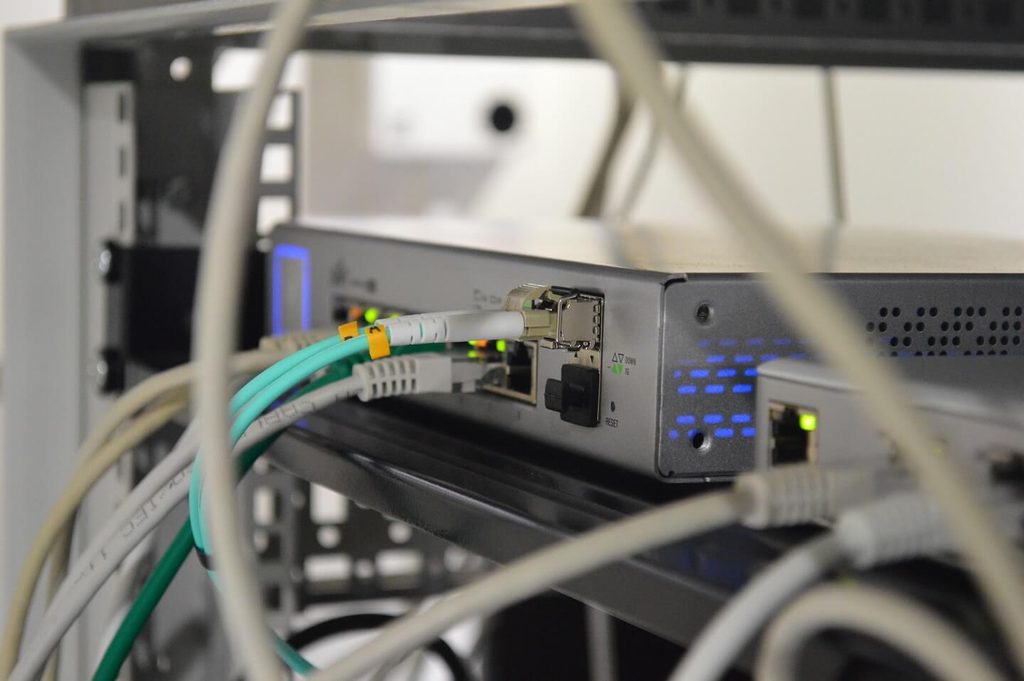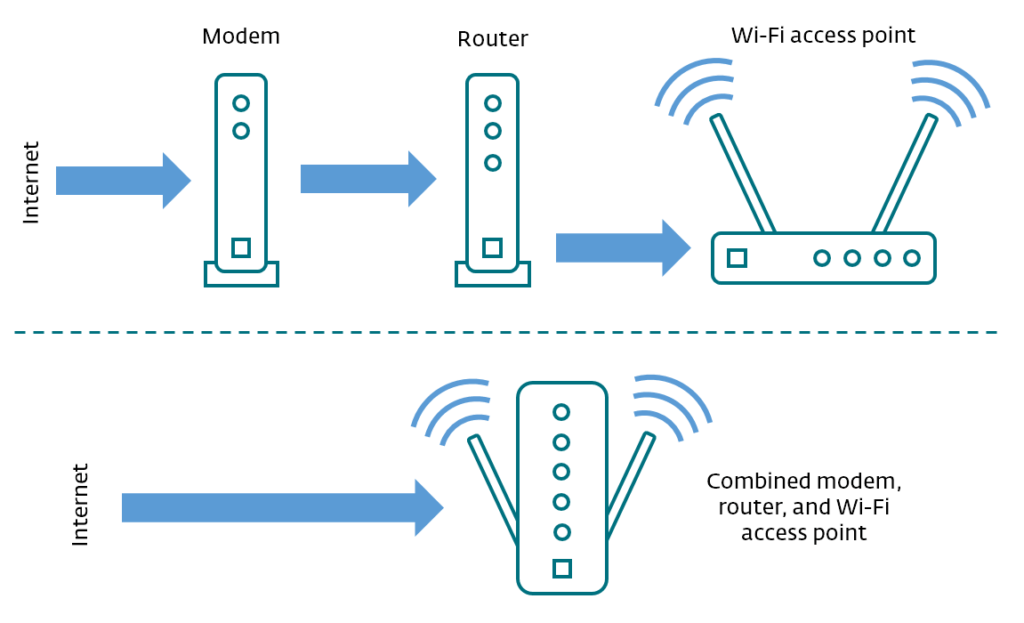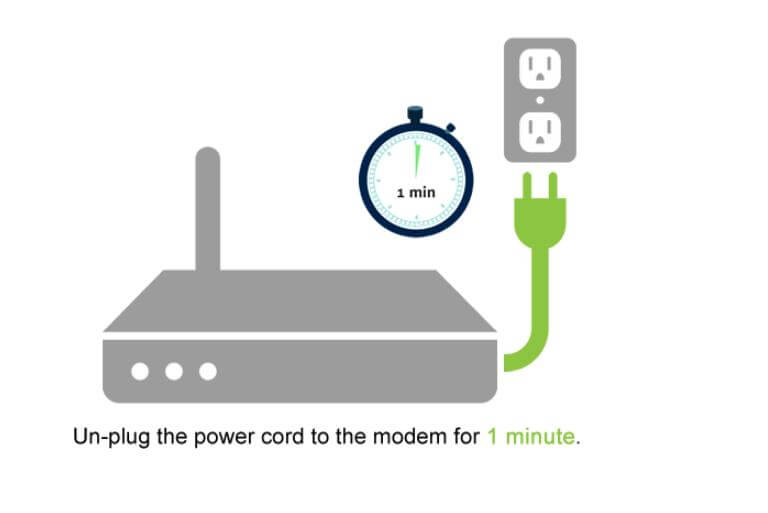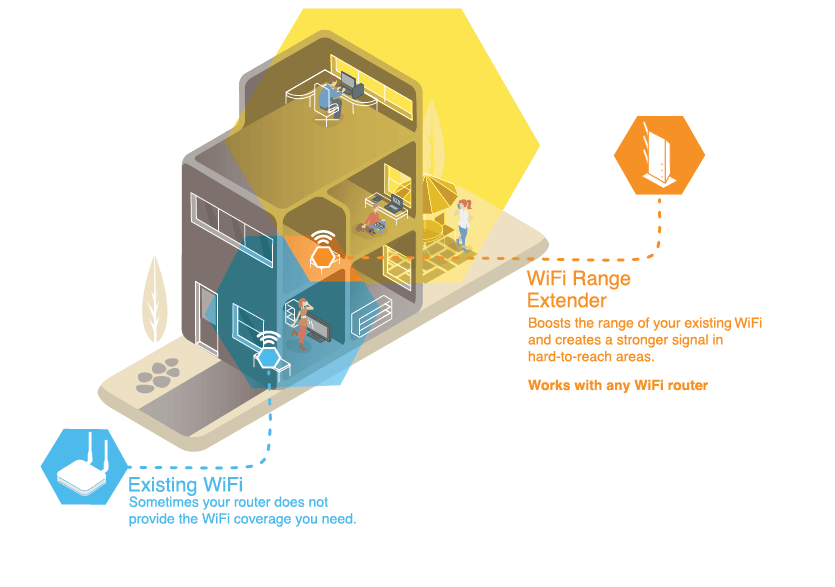Reboot and reset sound pretty similar, but they are technically quite different. If your WiFi is slow, your WiFi is not working, or you are having trouble connecting devices to the WiFi, then both of these methods can help. But it’s important to know when to reset or reboot your router.
Additionally, there are subsets of these terms, such as hard reset and soft reset. Although it may seem overwhelming at first, it’s important to learn the differences between these terms and their applications if you want to avoid potential issues.
Before jumping in, it’s also useful to review the differences between a modem and a router. Modems connect devices to the internet. Routers connect devices to WiFi. To make things a bit confusing, routers connect to modems to create private networks. Modems and routers work differently and require unique solutions.
The information below is geared towards routers and modem-router devices.
If this tutorial doesn’t help you resolve your router issue, or it’s too complicated, then consider our supplemental tech support services: Technician by-the-hour.
Reboot
When you turn something off and back on, you reboot it, whether it’s a phone, computer or router. For a router to be successfully rebooted, it must be completely disconnected from its power source, whether it’s coming from the wall, and internal battery or both.
There are several other words used to replace reboot that mean the same thing. If you hear the words or phrases restart, power cycle, recycle the power state or soft reset, you can know these words are all synonyms for reboot.
In order to reboot, you need to completely disconnect your router from its electricity source; you can do this by unplugging the unit from the wall or disconnecting the battery, but these aren’t always the best methods. To learn how to properly reboot your router, consider reaching out to HelpCloud Technicians for remote support.
Rebooting is a common technique that’s used to try and fix issues in lots of technologies. You have likely reboot your computer, television, tablet or phone before.
Hopefully, when you did this, your problem was solved. Although it seems simple, disconnecting and reconnecting a technology from a power source can fix many common issues.
When you shut down your router, everything shuts down.
The software inside the router that helps it run properly also temporarily shuts down if the router does not have power. When the system is temporarily shut down, the software remains unchanged. When you turn on your router again, the same software will run, but it should be running more effectively.
Reset
When you think of resetting, think of erasing.
Master reset, factory reset, restore and hard reset are all synonyms for resetting. When you reset a device, you take it back to the state it came in when it was purchased. For example, if you forget your combination to an automatic lock, you might reset it to factory settings so you know the code and are able to personalize the code again.
Similarly, if you forget the password to your router, you might reset it so it returns to the same network name and password it originally came with. In summation, if you ever forget the password to your router, you will need to reset it. If you reboot, it’ll turn back on and you’ll still be unable to login.
When you reset, information is wiped and reinstalled. When it comes to your router, for it to truly reset, its current software must be totally removed and restored to its original configuration.
Resetting is useful, but only when it’s needed.
Since this technique erases, it can remove customizations and other helpful features that come with new updates. If you ever think you may need to reset your router, it’s best to research your issue in detail beforehand and make sure there are no other fixes available.
When and Why to Reboot Your Router
Routers are fairly complex …
Like a computer, they house memory, local storage capabilities, an operating system and more. Sometimes, these components don’t function as they’re designed. Whenever your router isn’t working properly, the first step should be a reboot.
Something people often talk about is how long a router must be disconnected from power to properly reboot. There is a general rule of 10 seconds, which is pretty good advice. When you unplug an item, it sometimes takes a few seconds to fully power down.
If you’ve ever disconnected an item with a power light from electricity before, you might have noticed the power light stays on a few seconds after disconnection.
Routers often have capacitors. The capacitor is essentially a battery that can power the router for a few seconds. So, it’s wise to wait about 10 seconds after you unplug your router from power to make sure the power is fully drained, even from the capacitors. When the unit totally powers off, it can clear the memory and hopefully stop the issue that’s occurring.
As a general guideline, it’s smart to reboot your router on a schedule. The thought behind this method is that if you restart it every so often, you’ll likely need to restart it less due to an issue.
In order to do this, you can unplug your router every week. You could also plug your router into an outlet timer so you won’t need to fuss with remembering to reboot it every so often.
When and Why to Reset Your Router
Resetting is helpful, but it should nearly always be used as a last resort when it comes to fixing issues. Some routers come with reset options or buttons. Generally, reset buttons are on the back of the device and must be accessed with a paperclip or other small items.
When you use these buttons, your router will reset to factory settings. If you are having any kind of difficulty rebooting or resetting your router, consider reaching out to HelpCloud Technicians for remote support to help resolve the issue.
There are some events that require resets that don’t have to do with detectable router trouble. For example, in May of last year, the FBI asked router users to reboot their routers. As it turns out, many routers around the world were infected by a malware called VPNFilter. The malware was able to collect information and render devices inoperable.
Other Fixes Before a Reset
If you’re looking for an intermediate between rebooting and resetting, you’re in luck. There are several steps you can take before you will need to reset your router for an issue.
Although it may seem obvious, it’s not uncommon to misdiagnose a router issue. When you think there is an issue with your router, there might instead be an issue with the device you’re trying to use.
One common instance of this occurs when people are trying to connect Alexa to their other smart devices. It’s easy to think that if the technologies are not pairing correctly, there must be an issue with Bluetooth, your router or another wireless technology; however, this is not always the case. Before you mess with your router, especially before you reset, see if the issue might be occurring somewhere else in the system.
One way to enhance the operation of your router is with a firmware update. Like a computer, a router needs updates to continue running smoothly. Router updates can be less frequent than computer updates, but they’re still very important.
You can reach out to your router’s maker and see if there’s any new downloads or updates available for your router. If you’re experienced on the computer, you can also find this information for yourself from various applications or company sites.
Common WiFi Problems and Solutions
There are a few other ways to troubleshoot when it comes to your router …
If you have no internet access or slow internet access in specific parts of your residence, you can try to move your router to a more central location. If this is impossible or relocation doesn’t fix your issue, you might want a booster or extender.
If you have issues with one slow device or another technology that can’t connect to the WiFi, you can start by rebooting the particular device. You can also turn WiFi off and on again for the device to see if you can successfully connect.
What about when you appear to be connected but there’s no signal? Here, you will want to reboot your router. After the power cycle completes, the issue may resolve itself; if it continues, it might be time for a reset.
Another common issue is a loss of connection. When you lose connection, pay attention to what’s happening around you. Does the connection drop at a specific time of day or when you’re doing a particular activity?
It sounds strange, but something as simple as running a microwave can cause your WiFi connections to worsen. See if you can isolate a specific event or time of day that is tied to your changing connection.
Similar Words, Different Applications
Rebooting and resetting your router are both useful, but in different circumstances. To start, you’ll nearly always want to reboot your router to try and resolve issues. The only exception to this is if there is a security threat that requires your router to be restored to factory settings.
When security is not in question, there are several other steps you can take before resetting your router. Of course, when you need it, resetting your router can be exactly what’s required to overcome technological issues.
If you would rather have a professional take care of this then reach out now.




